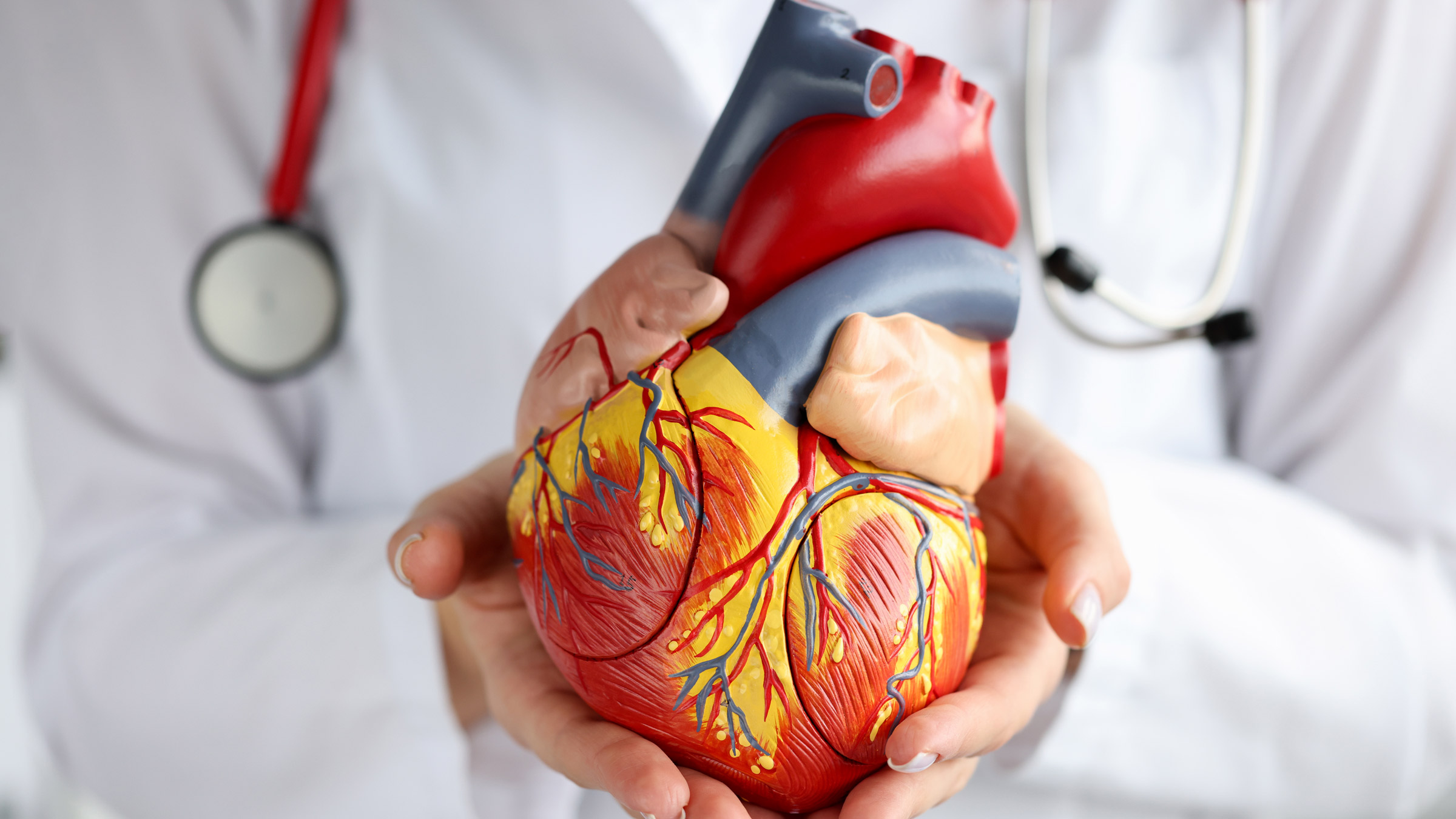Recognizing the Relevance of Cardiology in Modern Healthcare Services
Cardiology plays a vital function in contemporary health care, especially as heart problem proceeds to be the leading source of death worldwide. Breakthroughs in diagnostics and therapy have actually changed individual treatment, allowing earlier treatments and enhanced results. The shift in the direction of preventative cardiology encourages people to manage their health and wellness proactively. As innovation proceeds to progress, the combination of ingenious remedies might better redefine cardiology's effect on public wellness, motivating a more detailed exam of arising patterns and their ramifications.
The Occurrence of Heart Problem and Its Impact on Public Health
Although heart problem remains the leading reason of death worldwide, its impact extends much past private patients to influence public wellness systems and economic climates. The high frequency of heart illness positions a significant strain on medical care resources, demanding enhanced financing for avoidance, rehabilitation, and treatment programs. Public health and wellness initiatives need to resolve danger variables such as obesity, cigarette smoking, and less active lifestyles, which add substantially to the rising incidence of heart conditions.Moreover, the economic problem connected with heart problem is immense, including not just straight medical expenses yet additionally indirect expenses associated to shed performance and early mortality. Neighborhoods deal with obstacles in taking care of these costs, typically bring about differences in healthcare access and results. As the population ages and lifestyle-related dangers proceed to rise, the necessity for reliable cardiology treatments becomes paramount. Consequently, attending to heart problem is not just an issue of specific wellness yet additionally a crucial public health priority.
Developments in Cardiac Diagnostics and Imaging Techniques
Recent developments in cardiac diagnostics and imaging strategies have actually reinvented the field of cardiology, enhancing the ability to detect and monitor heart conditions. Methods such as cardiac MRI, CT angiography, and echocardiography have come to be progressively advanced, providing thorough pictures of cardiac structures and features. These techniques enable the very early recognition of conditions like coronary artery condition, cardiac arrest, and valvular disorders.Moreover, developments in non-invasive diagnostics, such as wearable technology and remote monitoring devices, have actually equipped clients and doctor. These tools facilitate real-time monitoring of heart rhythms and other crucial indications, leading to prompt interventions. Furthermore, expert system is being integrated right into imaging analysis, enhancing precision and effectiveness in medical diagnosis.
Developments in Therapy Choices for Heart Issues
Recent improvements in cardiology have resulted in substantial developments in therapy options for heart disease. These consist of advanced surgical strategies that enhance step-by-step end results and emerging medicines that supply new methods for therapy. As the field progresses, these innovations play a crucial duty in improving client treatment and end results.
Advanced Surgical Techniques
Innovations in surgical methods have actually transformed the landscape of cardiology, providing new expect people with heart disease. Minimally invasive treatments, such as catheter-based treatments, have actually greatly decreased healing times and hospital stays. Methods like robotic-assisted surgical treatment boost accuracy, allowing surgeons to navigate complex anatomical structures with greater accuracy. Additionally, developments in imaging innovation help with real-time visualization during procedures, enhancing results. Transcatheter aortic valve replacement (TAVR) exemplifies a breakthrough in dealing with aortic constriction, allowing valve substitute without open-heart surgical procedure. In addition, hybrid strategies that incorporate catheter-based and surgical approaches provide tailored remedies for numerous cardiac issues. These sophisticated surgical strategies not just enhance individual security but also increase treatment options, emphasizing the vital role of technology in modern-day cardiology methods.
Arising Treatments and medicines
As the landscape of cardiology continues to advance, emerging drugs and therapies play an essential role in boosting treatment alternatives for heart problems. Developments such as novel anticoagulants and progressed lipid-lowering agents have actually transformed the monitoring of cardio diseases, considerably decreasing person morbidity and mortality. In addition, the advancement of genetics therapies and regenerative medication provides encouraging avenues for dealing with conditions previously regarded irreversible. Professional trials are consistently disclosing the effectiveness of these treatments, pushing the borders of conventional therapies. The assimilation of digital health innovations assists in personalized medicine, allowing for customized treatment plans based on genetic and way of life variables. Jointly, these advancements emphasize the vibrant nature of cardiology, improving person end results and redefining standards of care in modern health care.
The Role of Preventive Cardiology in Client Care
Precautionary cardiology plays a crucial duty in patient care by concentrating on the identification of risk factors that add to cardiovascular disease. Through lifestyle modification techniques and early detection techniques, medical care carriers can properly minimize the occurrence of cardiovascular events - Cardiologist near me. This aggressive method not only boosts person end results yet likewise promotes long-term health
Threat Aspect Identification
While heart diseases remain a leading reason for morbidity and death worldwide, efficient threat aspect identification acts as a cornerstone of preventive cardiology. Recognizing danger elements such as hypertension, diabetes mellitus, hyperlipidemia, and household history is crucial for early intervention. Health care professionals make use of various evaluating techniques to review these aspects, enabling customized preventive actions. Furthermore, recognizing a client's way of living options, such as smoking cigarettes and physical inactivity, better notifies threat assessments. This detailed assessment enables clinicians to create customized care strategies targeted at mitigating dangers. By prioritizing danger variable identification, health care systems can boost client end results and reduce the general problem of heart diseases, inevitably adding to improved public health and this contact form wellness approaches and resource allotment.
Way Of Living Alteration Strategies
A wide range of researches highlights the critical role of way of life adjustment approaches in reducing cardiovascular disease danger. These methods incorporate nutritional adjustments, increased physical activity, smoking cessation, and weight administration. By embracing a heart-healthy diet plan abundant in fruits, vegetables, whole grains, and lean proteins, individuals can reduce cholesterol degrees and blood stress. Normal exercise reinforces the heart and boosts total cardio wellness. Furthermore, quitting smoking significantly decreases the danger of heart condition and improves healing rates for those with existing conditions. Weight management further adds to cardio health and wellness by alleviating other risk factors such as diabetes mellitus and high blood pressure. Carrying out these way of life alters not only advertises private wellness but also functions as a keystone of precautionary cardiology in client treatment.
Very Early Detection Methods
Way of living alterations considerably contribute to reducing cardio disease threats, however they are most effective when coupled with very early detection strategies. Precautionary cardiology emphasizes the relevance of determining possible heart problems before they intensify right into serious problems. Techniques such as blood stress tracking, cholesterol testing, and advanced imaging modern technologies like echocardiograms play crucial duties in assessing cardio health. Biomarkers and hereditary screening also improve the accuracy of early discovery, allowing for customized preventative techniques. Routine heart danger evaluations empower doctor to interfere proactively, potentially stopping cardiac arrest and strokes (Cardiologist near me). By integrating these very early discovery methods into regular treatment, patients can benefit from prompt way of living interventions and targeted treatments, eventually improving and boosting end results quality Recommended Site of life
Integrating Innovation Into Cardiology Practices
As innovations in technology continue to reshape different areas, the assimilation of cutting-edge tools and systems into cardiology practices has actually become vital for improving individual treatment and end results. Telemedicine systems allow cardiologists to monitor people from another location, boosting accessibility to care while reducing the concern on health care centers. Wearable gadgets, such as smartwatches, allow constant heart rate monitoring, notifying both medical professionals and people to possible concerns in real-time. In addition, fabricated knowledge (AI) is being made use of to examine huge amounts of cardiac data, aiding in very early medical diagnosis and individualized treatment plans. Advanced imaging techniques, consisting of 3D echocardiography, improve visualization of heart structures, resulting in more specific treatments. Electronic health documents (EHRs) enhance person details administration, guaranteeing that cardiologists have immediate access to essential information. With each other, these technological improvements are transforming cardiology, promoting aggressive management and enhanced health end results for individuals with cardiovascular conditions.
The Relevance of Patient Education And Learning and Engagement
Individual education and interaction play a crucial duty in the management of cardio health. By furnishing people with understanding concerning their conditions, treatment alternatives, and lifestyle modifications, doctor equip people to take an active duty in their care. This proactive approach can result in enhanced adherence to suggested medicines, nutritional adjustments, and exercise routines, inevitably reducing the danger of complications.Engagement likewise cultivates a solid patient-provider relationship, encouraging open communication and depend on. When people really feel informed and involved, they are much more likely to voice worries and ask inquiries, which can bring about better clinical outcomes. Additionally, academic sources, such as workshops or electronic systems, can boost understanding and advertise self-management strategies. Generally, focusing on individual education and engagement is important for improving cardiovascular health, improving lifestyle, and reducing healthcare costs related to cardiovascular diseases.
Future Fads in Cardiology and Their Possible Effect

Often Asked Concerns
What Lifestyle Modifications Can Minimize Cardiovascular Disease Danger?
The present inquiry addresses way of living changes that can greatly minimize heart illness danger. Cardiology. Embracing a balanced diet regimen, taking part in regular physical task, preserving a healthy weight, managing tension, and staying clear of tobacco can significantly boost cardio wellness
Exactly How Can I Recognize Very Early Indications of Heart Troubles?
Acknowledging very early indications of heart troubles includes surveillance signs such as chest pain, lack of breath, fatigue, and uneven heartbeat. Prompt recognition of these signs can prompt needed medical examination and treatment for much better end results.
What Are the Differences In Between Cardiologists and Heart Surgeons?
The differences in between cardiologists and heart cosmetic surgeons hinge on their roles; cardiologists mostly take care of and diagnose heart disease via non-invasive methods, while heart cosmetic surgeons do procedures to fix architectural heart problems. Each plays an essential, unique duty.

Exactly how Typically Should I Get My Heart Wellness Checked?
The frequency of heart checkup varies based on individual risk factors. Generally, adults should undertake examinations every one to 2 years, while those with status quo may require more constant analyses as suggested by medical care experts.
What Role Does Genes Play in Cardiovascular Disease Threat?
Genetics greatly affects cardiovascular disease threat, with domestic patterns indicating acquired conditions. Certain genes can incline individuals to high blood pressure, cholesterol issues, and various other cardiovascular troubles, highlighting the significance of hereditary screening in reviewing heart health. Heart condition stays the leading reason of death around the world, its impact expands far past specific clients to influence public health systems and economic situations. Public health and wellness campaigns should resolve risk aspects such as excessive weight, cigarette smoking, and less active lifestyles, which contribute substantially to the rising incidence of heart conditions.Moreover, the financial worry associated with heart illness is tremendous, encompassing not only direct clinical prices yet also indirect costs associated to shed performance and premature mortality. Precautionary cardiology plays a necessary duty in patient care by focusing on the identification of danger aspects that add to heart condition. Fabricated intelligence (AI) and machine knowing are improving diagnostics and individual surveillance, making it possible for very early discovery of heart conditions. The distinctions in between cardiologists and heart doctors exist in their duties; cardiologists primarily manage and identify heart conditions through non-invasive methods, while cardiac surgeons perform surgical treatments to deal with architectural heart concerns.